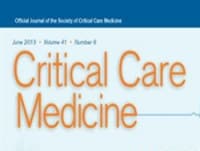Abstract and Introduction
Abstract
Objectives: To evaluate whether a nurse navigator-led, multicomponent Sepsis Transition And Recovery program improves 30-day mortality and readmission outcomes after sepsis hospitalization.
Design: Multisite pragmatic randomized clinical trial.
Setting: Three hospitals in North Carolina from January 2019 to March 2020.
Patients: Eligible patients hospitalized for suspected sepsis and deemed high-risk for mortality or readmission by validated internal risk models.
Interventions: Patients were randomized to receive usual care alone (i.e., routine transition support, outpatient care; n = 342) or additional Sepsis Transition And Recovery support (n = 349). The 30-day intervention involved a multicomponent transition service led by a nurse navigator through telephone and electronic health record communication to facilitate best practice postsepsis care strategies during and after hospitalization including: postdischarge medication review, evaluation for new impairments or symptoms, monitoring comorbidities, and palliative care approach when appropriate. Clinical oversight was provided by a Hospital Medicine Transition Services team.
Measurements and Main Results: The primary outcome was a composite of mortality or hospital readmission at 30 days. Logistic regression models were constructed to evaluate marginal and conditional odds ratios (adjusted for prognostic covariates: age, comorbidity, and organ dysfunction at enrollment). Among 691 randomized patients (mean age = 63.7 ± 15.1 yr; 52% female), a lower percentage of patients in the Sepsis Transition And Recovery group experienced the primary outcome compared with the usual care group (28.7% vs 33.3%; risk difference, 4.7%; odds ratio, 0.80; 95% CI, 0.58–1.11; adjusted odds ratio, 0.80; 95% CI, 0.64–0.98). There were 74 deaths (Sepsis Transition And Recovery: 33 [9.5%] vs usual care: 41 [12.0%]) and 155 rehospitalizations (Sepsis Transition And Recovery: 71 [20.3%] vs usual care: 84 [24.6%]).
Conclusions: In a multisite randomized clinical trial of patients hospitalized with sepsis, patients provided with a 30-day program using a nurse navigator to provide best practices for postsepsis care experienced a lower proportion of either mortality or rehospitalization within 30 days after discharge. Further research is needed to understand the contextual factors associated with successful implementation.
Introduction
Sepsis is a common, life-threatening condition defined by organ dysfunction due to a dysregulated response to infection.[1] Aggressive early sepsis identification and treatment initiatives have decreased hospital mortality for patients with sepsis over the last few decades.[2] However, sepsis survivors face challenges after the acute illness episode, experiencing new functional, cognitive, and psychologic deficits, new or recurrent infections, exacerbation of chronic diseases, and high rates of hospital readmission and postdischarge mortality.[3–5]
To address persistent morbidity and mortality for sepsis survivors, we developed the Sepsis Transition and Recovery (STAR) program, based on the widely adopted Chronic Care Model.[6] The STAR program built on our evaluation of transition interventions in complex patients, which suggested benefit in the subgroup of patients with sepsis,[7] with the following modifications: 1) the program elements specifically addressed best practices for postsepsis care[3] and 2) the program was delivered through a remote navigator to alleviate the challenges of low adherence to in-person follow-up. The navigator provides disease education, helps patients overcome medical system barriers to recommended care, and bridges gaps in service that can serve as points of failure for sepsis patients. The STAR program specifically targets delivery of best practice postsepsis care including: 1) medication optimization, 2) screening for new impairments, 3) anticipation and mitigation of risk of health deterioration, and 4) palliative care when appropriate.[3] Receipt of these care elements is associated with reduced postdischarge mortality and rehospitalization.[8]
The Improving Morbidity during Post-Acute Care Transitions for Sepsis (IMPACTS) trial tests the hypothesis that implementation of the STAR program reduces 30-day readmission and mortality rates for high-risk patients with suspected sepsis compared with usual care (UC) alone.

